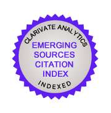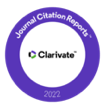La imagen de la ciudad moderna: invención, construcción y uso de la nueva Roma Capital (1870-1911)
DOI:
https://doi.org/10.22530/ayc.2022.22.625Palabras clave:
Roma Capital, Arte, Imagen urbana, Paisaje histórico, Comunicación, Políticas culturalesResumen
En 1911 la Exposición Internacional se convirtió en el gran evento conmemorativo del 50 aniversario de la Unificación de Italia, aprovechándose esa circunstancia para distribuir las sedes entre las tres capitales del nuevo Estado: Turín, Florencia y Roma. Fue en esta última ciudad donde se concentraron las manifestaciones en torno a las Bellas Artes y la Etnografía, utilizando la cultura como imagen de marca de la nueva capital. Culminaba con ello el proceso de construcción de la imagen de la nueva Roma Capital que se había iniciado en 1870 tras la entrada en la ciudad de las tropas de Garibaldi, comenzando una transformación urbana de notable impacto que alcanza entonces un momento culminante con el desarrollo del nuevo Piano Regolatore Generale de Sant Just. El análisis de la imagen pública que se buscaba transmitir a través de los eventos organizados en torno a la Exposición nos acerca aún más al proceso de consolidación de Roma como nueva capital del Estado, directamente relacionado con los cambios en su trama urbanística y a la búsqueda en lo arquitectónico de un estilo nacional y moderno. La fotografía, los carteles, la prensa, los pabellones, las construcciones efímeras, las exposiciones, los nuevos barrios, los puentes, los jardines y los monumentos públicos entre otros múltiples factores permiten reconstruir la “idea de ciudad” con la que pretendieron mostrar al mundo la imagen moderna de la nueva Roma. En este contexto, debía dotarse a la ciudad de Roma, capital de la nación en ciernes, de una imagen que representara los valores con los que la nueva Italia pretendía comprometerse. Surgía así la necesidad de crear una marca-ciudad capaz de proyectar al resto del mundo la imagen de una capital monárquica, moderna y burguesa, sin renunciar a la tradición de ser la ciudad símbolo del poder del Papado y la gloria del Imperio Romano. Y a ello se aplicarán, desde la política al mundo de la cultura, a través de un completo y perfectamente planificado programa de actuaciones, en el que jugarán papel determinante los artistas, la proliferación de monumentos públicos, y la creación y reorganización de numerosas e importantes instituciones y sedes culturales, tanto en el ámbito de la ciudad histórica como en las nuevas áreas de crecimiento de la metrópoli moderna. A ello se sumarán los necesarios planes de urbanismo, la restauración de monumentos, y las nuevas teorías que a ella se vinculan, las actuaciones arqueológicas, la creación de nuevos barrios y áreas de expansión para viviendas e industrias.
Citas
ACCASTO, G. – FRATICELLI, V. – NICOLINI, R. (1971). L’architettura di Roma capitale. Roma.
ALONSO PEREIRA, J.R. (2003). Roma Capital. Invención y construcción de la ciu-dad moderna. Universidade da Coruña.
AYMONINO, C. (1983). El significado de las ciudades. Blume, Madrid.
BELLÓN RUIZ, J.P. – TORTOSA, T. (2010): “La Mostra Archeologica nelle Ter-me di Diocleziano, 1911”. En AA.VV. Repensar la Escuela del CSIC en Ro-ma, cien años de memoria. CSIC, Madrid, pp. 205-213.
BRAUNFELS, W. (1987). Urbanismo Occidental. Alianza, Madrid.
BRICE, C. (1998). Monumentalité publique et politique á Rome: le Vittoriano. Ecole Francaise, Roma.
BRICE, C – RACHELI, A.M. – et al. (1986). Il Vittoriano, materiale per una sto-ria. F. Palombi, Roma.
CALVENTO, M. y OCHOTECO, M. (2009). “Una aproximación a la construc-ción de marca-ciudad como estrategia de inserción nacional e internacio-nal”. Revista Economía, Sociedad y Territorio, El Colegio Mexiquense A.C., México, vol. IX, nº 29, pp. 60-87.
CHAVES MARTÍN, M.A. (2012): “Simbolismo y transformación del paisaje urbano en el programa de escultura monumental de Roma Capital”. Ac-tas II Congreso Internacional Ciudades Creativas, Icono 14, Madrid, pp. 2025-2038.
CHAVES MARTÍN, M.A. (2016): “Valle Giulia. Génesis y consolidación de un nuevo área cultural en la Roma moderna”. Lorente, J.P. y Chaves, M.A. (coords.). Barrios Artísticos y Distritos Culturales. Nuevos espacios para la creatividad y la revitalización urbana. Icono 14, Madrid, pp. 161-194.
CHAVES MARTÍN, M.A. y HEREDERO DÍAZ, O. (2016): “La Exposición Inter-nacional de Roma de 1911: Lugares y eventos en el proceso de construc-ción de la imagen de la nueva capital”. 5º Foro Internacional Ciencias de los Ámbitos Antrópicos. El Futuro de la Ciudad, sustentabilidad y conservación. Universidad Autónoma de Aguascalientes (México).
CIUCCI, G. – FRATICELLI, V. (1984) Roma Capitale 1870-1911. Architettura e urbanística. Uso e trasformazione della citta storica. Marsilio Editori, Vene-cia.
COEN, Paolo (2020). Il recupero del Rinascimiento. Arte, política e mercato nei primi decenni di Roma capitale (1870-1911). Silvana Editoriale, Milano.
CREMONA, A. (2005). “Passeggiata del Gianicolo”. Alberta Campitelli (a cu-ra di). Verdi delizie. Le ville, i giardini, i parchi storici del Comune di Roma. De Luca Editori, Roma, pp. 45-47.
DUGGAN, C. (1996). Historia de Italia. Ediciones AKAL, Madrid.
FERNÁNDEZ, J. – FEIJÓO, B. (2013). “La organización de eventos como estra-tegia de relaciones públicas. El caso del festival de Cans”. Question - Re-vista Especializada en Periodismo y Comunicación, Facultad de Periodismo y Comunicación Social, Universidad Nacional de La Plata, Buenos Aires (Argentina), vol. 1, nº 37, pp. 289-301.
FERNÁNDEZ, G. – PAZ, S. (2005). “Más allá del marketing de ciudades: hacia una política pública de diseño y gestión de los signos de identificación de ciudad”. Scripta Nova. Revista Electrónica de Geografía y Ciencias Sociales, Universidad de Barcelona, Barcelona, vol. IX, nº 194 (95).
HEARDER, H. – MORRIS, J. (2003). Breve historia de Italia. Alianza Ed., Ma-drid.
INSOLERA, I. (1985). Le citta nella storia d’Italia: Roma. Laterza, Roma.
INSOLERA, I. (2001): Roma moderna. Un secolo di storia urbanística, 1870-1970. Giulio Einaudi Editore, Torino.
JIMÉNEZ, M. – SAN EUGENIO, J. (2009). “Identidad territorial y promoción turística: la organización de eventos como estrategia de creación, consoli-dación y difusión de la imagen de marca del territorio”. Zer – Revista de Estudios de Comunicación, Leioa (Vizcaya), Facultad de Ciencias Sociales y de la Comunicación de la Universidad del País Vasco, vol. 14, nº 26, pp. 277-297.
KOSTOFF, S. (1973). The Third Rome, 1870-1950. Traffic and Glory. Berkeley.
LASARTE, M. P. (2015). “Estudio del desarrollo del place branding a partir del análisis de las marcas territoriales existentes en España”. Papers de Tu-risme, Valencia, Agència Valenciana del Turisme, nº 56, pp. 119-143.
LONDONO, C. (2007). “Arte Público y Ciudad”. Revista de Ciencias Humanas. UTP Pereira, Colombia, nº31.
MADERUELO, J. (1994). Arte Público. Diputación de Huesca. Huesca.
MANCIOLI, D. (1983): “La Mostra Archeologica del 1911 e le Terme di Dio-cleziano”. En Roma Capitale 1870-1911. Dalla mostra al Museo. Dalla mos-tra archeologica del 1911 al Museo della Civiltá Romana. Venice, Marsilio, pp. 52-61.
MUÑIZ, N. – CERVANTES, M. (2010). “Marketing de ciudades y place bran-ding”. Pecvnia: revista de la Facultad de Ciencias Económicas y Empresariales. Universidad de León, León, nº extra 1, pp. 123-149.
PAÜL i AGUSTÍ, D. (2013). “Las políticas culturales y sus repercusiones en la imagen de la ciudad”. Scripta Nova. Revista Electrónica de Geografía y Cien-cias Sociales, Universidad de Barcelona, Barcelona, vol. XVII, nº 432, pp. 425-462.
RIETBERGEN, P. (2012): Rome and the world – The world in Rome. The politics of international culture, 1911-2011. Republic of Letters, Dordrecht, 2012.
ROMERO, L. (2010). “Dos décadas de urbanismo-espectáculo en España: los grandes eventos como motor de cambio urbano”. Boletín de la Asociación de Geógrafos Españoles, Asociación de Geógrafos Españoles, Centro de Ciencias Humanas y Sociales del CSIC, Madrid, nº 53, pp. 309-327.
ROWE, C. y SATKOWSKI, L (2013): La arquitectura del siglo XVI en Italia. Artis-tas, mecenas y ciudades. Reverté, Barcelona.
SAN EUGENIO, J. (2011). “La transformació de territoris en marques: el reco-neixement i la diferenciació d’identitats espacials en temps postmoderns. Un estat de la qüestió”. Departament de Comunicació, Universitat Pom-peu Fabra, Barcelona, Tesis doctoral.
SANFILIPPO, M. (1993). Le tre cittá di Roma. Lo sviluppo urbano dalle origini a oggi. Laterza, Roma-Bari.
SICA, P. (1981). Historia del Urbanismo. El siglo XIX. Vol. 1. IEAL, Madrid.
SIMMEL, G. (2013): Roma, Florencia, Venecia. CasimiroLibros, Madrid.
VENTUROLI, M. (1995). La patria di marmo. (edición original 1957). Newton Compton, Roma.
Descargas
Publicado
Cómo citar
Número
Sección
Licencia
Derechos de autor 2022 ARTE Y CIUDAD. Revista de Investigación

Esta obra está bajo una licencia internacional Creative Commons Atribución-NoComercial 4.0.











